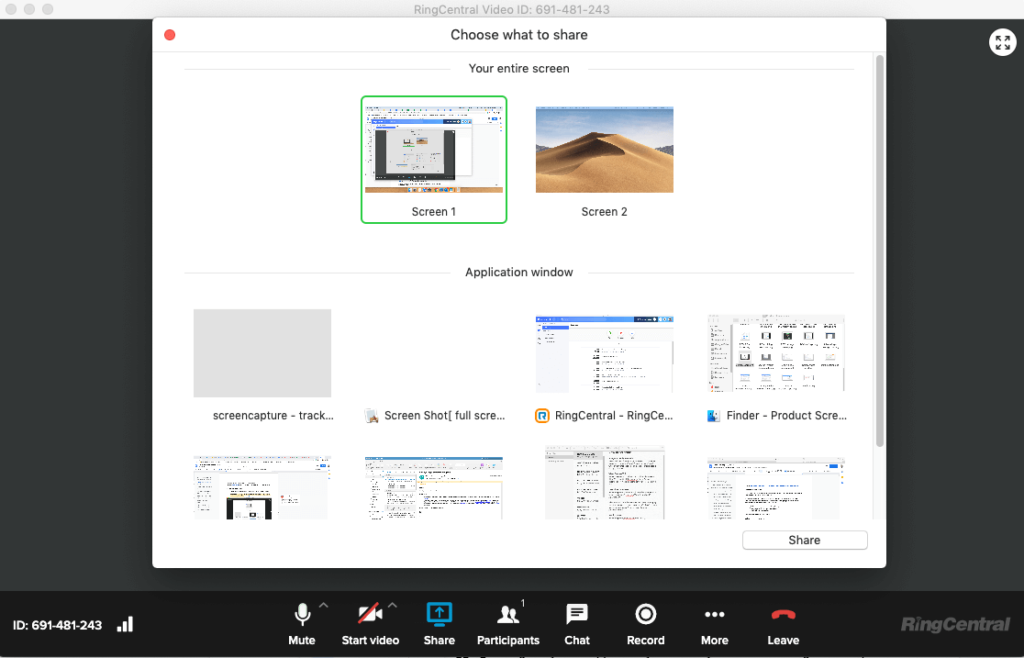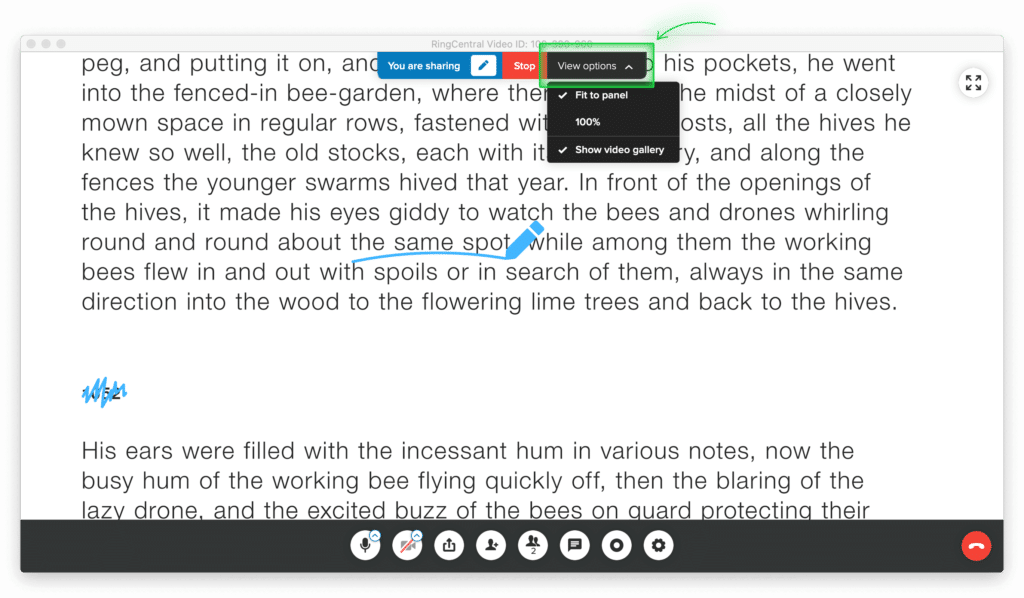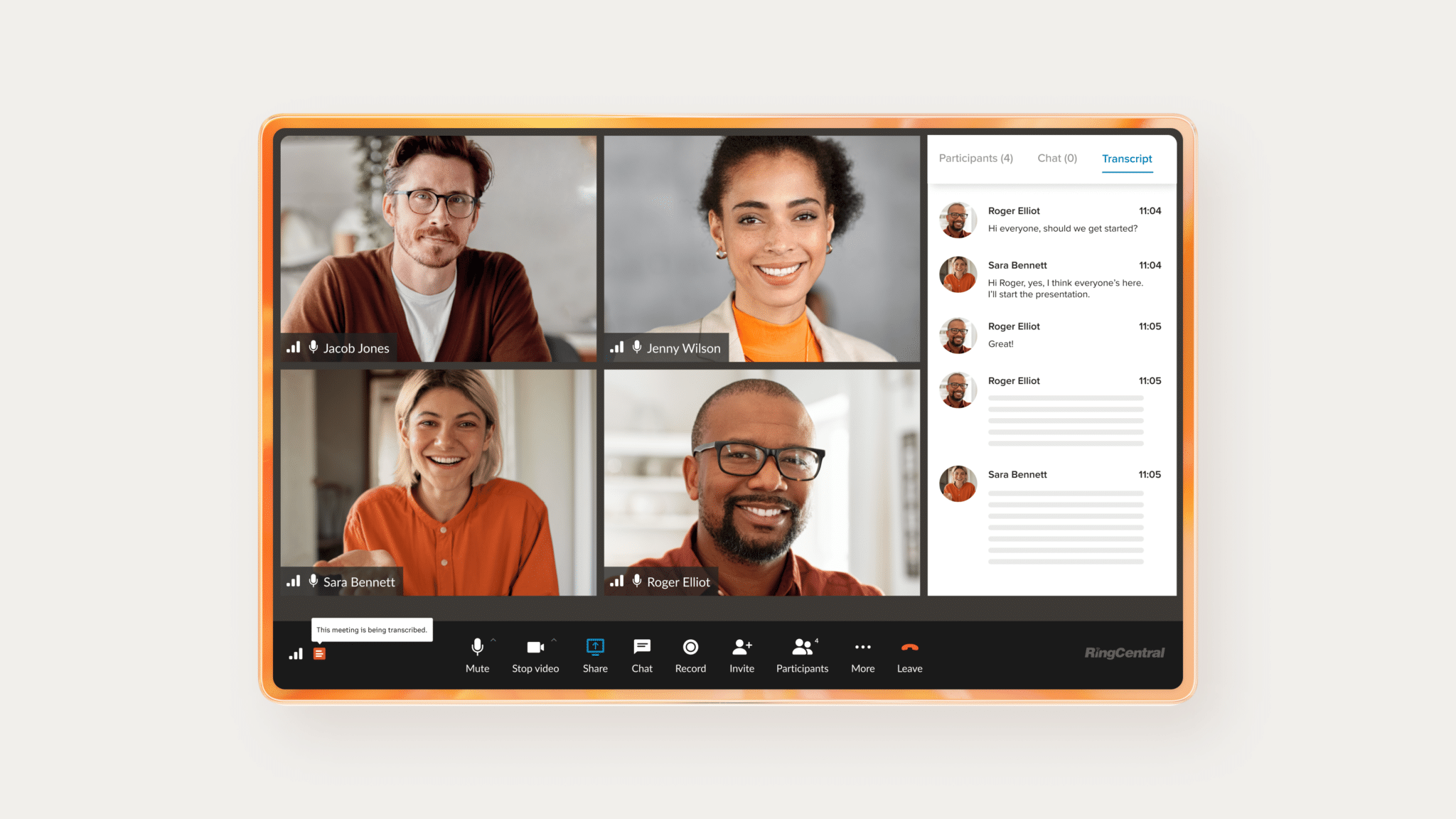Team projects can be a polarizing topic. Some people thrive on collaboration, while others prefer to work independently. Everyone has their own preferred style of working, ranging from “I prefer to always work alone” to “I do my best work only with others.”
However, collaboration in the workplace isn’t a one-size-fits-all scenario. It involves a mix of independent and interdependent tasks, providing opportunities for everyone to contribute in their own way.
Many attribute these preferences to simply being introverted or extroverted, but that’s a misconception. Good collaboration is about understanding your own work preferences and those of your team members, enabling transparent and collective progress towards a common goal. Even if one person takes the lead, everyone else brings their unique skills to the table.
At RingCentral, we’re dedicated to enhancing team collaboration through our innovative tools designed for modern teams. We understand that working with others can sometimes be challenging, which is why we’ve created a comprehensive guide to help you maximize the benefits of collaboration.
In this post, we’ll cover:
- Why you should learn about your own collaboration style
- Why collaboration is as important as ever in a time of coronavirus (and beyond)
- The 4 most common collaboration styles (including a short quiz to find out yours)
- Ways to facilitate remote versus in-person collaboration
🔑 Spoiler alert: a powerful communication tool is one key to better collaboration. Grab the free checklist to help you choose the right one for your business.
Why should I know my collaboration style?
In general, knowing your collaboration style (and that of your team members) can help you form a more effective communication strategy for your workplace.
Collaboration can feel awkward at first, especially when working with those you’re unfamiliar with. The first couple of times you get together, you sense that ideas aren’t flowing that well, one person seems to dominate the question, and, worst of all, no takeaways are established.
Teamwork requires compromise, but how can you know what you should compromise on when you don’t understand the importance of what things mean to others. For instance, quality might matter most to you, while your colleague is more interested in completing the project on time. Sometimes, there just doesn’t seem to be a right answer.
Cooperation is also another requirement of collaboration, but how do you cooperate with others when you don’t have a good idea of what their values are?
Knowing your collaboration style helps you to better:
-
Understand Personal Preferences: Often, we go along with how others operate, neglecting our own preferences. By identifying your collaboration style, you can engage in methods that align with your personal inclinations, rather than just conforming to existing practices.
-
Example: When your team gathers in a noisy lounge, you struggle to think clearly. Your optimal collaboration style involves working in quiet, focused spaces away from distractions
-
-
Enhance Communication: Recognizing the collaboration styles of your teammates allows you to tailor your communication effectively. This ensures your message resonates with individuals rather than addressing a generic audience.
-
Example: If you understand problems through numbers while a teammate focuses on results, presenting your concerns from their perspective can help secure their support for your proposed changes.
-
- Manage conflict: Even the most cohesive teams encounter disagreements. Awareness of each team member’s collaboration style and concerns enables you to address issues constructively, ensuring everyone feels heard.
-
Example: Noticing frustration after a usually reserved colleague’s idea is overlooked, you follow up in your team chat to revisit and acknowledge their suggestion.
-
A note on virtual collaboration
They say that when it comes to communication, 7% comes from spoken words, 38% from tone of voice, and (a whopping!) 55% from body language.1
As you can probably imagine, there’s a lot that goes unsaid when we’re collaborating with folks across a video meeting. Without the context of the environment or the ability to note hand gestures or subtle facial expressions (ever been on a virtual call with 10 participants? Yeah, the faces get pretty small), we can feel lost when it comes to truly understanding one another.
Starting a project with new peers without having initially met face-to-face can be testing when it comes to trust and relationship building. The loss of the handshake is also the loss of an opportunity to feel connected.
That’s why not only knowing your own but sharing each other’s collaboration style can take a lot of the guesswork out of getting to know one another in a short amount of time. Instead of making assumptions about others’ work habits, values, or motivations, you can compare the results of your Collaboration Work Styles Quiz below.
The 4 most common collaboration styles
Ready to find out which style of collaborator you are? Take our short quiz to find out!
What do you care most about when working in a group setting?
- Getting things done effectively without delay and seeing results right away
- Having democracy in a team and keeping the group harmony
- Exploring new possibilities in untapped opportunities and embracing creativity
- Attention to detail to get things right and downtime to think independently
What sort of things are you most motivated by in a team environment?
- Winning, excelling past the competition, and achieving success
- Cooperating well and receiving sincere appreciation from others
- Novel experiences, interesting tasks, and positive social recognition
- Demonstrating my expertise and gaining knowledge in my area of interest
How do you handle conflict when it involves multiple people?
- Asserting my position and then letting the best idea win
- Gathering everyone’s point of view to find a compromise that accommodates as many people as possible
- Seeking outside opinions to get a fresh perspective on all the positions
- Taking time to myself to process the situation and approach it with logic
When you approach discussions during team meetings, you tend to be:
- Direct and decisive—I say what’s on my mind with no hesitation
- Patient and cooperate—I let others go first and chime in when appropriate
- Lively and energetic—I’m enthusiastic and animated when it comes to sharing ideas
- Thoughtful and systematic—I make sure every contribution adds value to the conversation
The project your team is working on keeps getting delayed, what’s the one factor you refuse to compromise on?
- The results—project milestones need to be hit on time and on budget going forward
- The people—the relationships of those formed in the group takes precedence over the job itself
- The ideas—goals are lofty but you intend to see them through without downgrading the vision
- The precision—it doesn’t matter how quick or how much is done, quality is everything
Ready for your results?
If you answered mostly 1s, you’re a Director.
If you answered mostly 2s, you’re a Harmonizer
If you answered mostly 3s, you’re an Initiator.
If you answered mostly 4s, you’re an Analyst.
The Director
Every group can benefit from a Director. You’re often seen as the leader and decision maker and one who initiates discussions often (since you’re more than comfortable with voicing your thoughts). Because you’re motivated by tangible results and hitting milestones on time and on budget, you have a natural gift for taking charge and seeing responsibilities through.
Strengths in a team setting:
- Establishing order at the start of a project or during times of uncertainty
- Ability to be influential and motivating
- Delineating team roles and responsibilities and helping to structure the team’s tasks
Environments you work best in:
- Fast-paced/agile (work happens quickly and continuously with minimal interruption in between)
- Structured (work is well-documented and scheduled)
- Efficient (team is able to do more in less time)
Careful to watch out for:
- Overshadowing your peers with speaking on behalf or over others
- Dominating a conversation
- Having requests come across as demanding
The Harmonizer
You’re the people-person and the glue that keeps everyone together. You’re known for building great relationships and facilitating team interactions with grace and humility. Because you’re motivated by genuine cooperation, you go the extra mile to ensure everyone’s opinions are heard. You’re always available as a supportive resource for those who need an extra bit of help.
Strengths in a team setting:
- Ability to resolve conflict with patience and understanding
- Reguarly encourages and motivates others to achieve their potential
- High emotional intelligence to tap into what others are feeling even when they’re not outwardly expressed
Environments you work best in:
- Calm (space where deliberation can happen)
- Harmonious (team members demonstrate trust and respect through words and actions)
- Friendly (relationships with teammates don’t have to stop with work)
Careful to watch out for:
- Reluctance to say what’s on your mind at the risk of offending others
- Being overly accommodating to others’ needs and wants
- Being overly cautious of change and settling for status quo
The Initiator
You bring variety to the table and can easily see the bigger picture in whatever you do. Others know you for often coming up with great ideas and opening up the discussion so everyone can explore new territory together. Because you’re motivated by novelty and new inventions, you’re no stranger to thinking outside the box by constantly seeking external means for inspiration or creativity.
Strengths in a team setting:
- Being a champion of change and making regular suggestions for team improvements
- Contributes thought provoking discussion by offering fresh perspectives regularly
- Limits groupthink by playing devil’s advocate to agreeable ideas
Environments you work best in:
- Stimulating (positive encouragement to think differently)
- Freedom of expression (everyone can express themselves without judgement)
- Positive and creative (failures are seen as opportunities for learning)
Careful to watch out for:
- Acting impulsively, such as by blurting out unfinished ideas during meetings or interrupting discussion
- Being disorganized when it comes to prioritizing tasks or hitting deadlines
- Putting things on the back burner for too long (you might pick up tasks easily, but make sure to follow through!)
The Analyst
You love to dive into a complex problem and pull it apart in every way until the answer’s found. You’re known for being extremely analytical and prefer to deal with work linearly, in sequential order—finishing one thing before starting another. Because you’re motivated by data and the accuracy of it, you are very process-oriented and prefer to take time to reflect on new ideas and thoughts.
Strengths in a team setting:
- Brings forth research driven information to better inform the team’s decision
- Meticulous for getting down to the hard facts of a situation, rather than rely on guesswork or assumptions
- Observant of details that others may overlook
Environments you work best in:
- Autonomous (plenty of downtime to focus independently)
- Routine (meetings that happen the same day every week, tasks are made into habits, etc.)
- Quiet (ability to focus and hear one’s thoughts easier)
Careful to watch out for:
- Overanalyzing a situation and losing time because of it; difficulty getting into action (analysis paralysis!)
- Being overcritical of yourself, but also of others’ words and actions (especially if they fall out of your domain)
- Fearful of being wrong and ignoring any criticism as a result
Stay informed with RingCentral
Remote and in-person ways to facilitate better communication and teamwork
Depending on where members of your team are located, collaboration can take place in a number of ways. Whatever the case, there are some cloud collaboration tools that could be real game-changers for your team.
Remote collaboration styles:
1. Group channels: Having one space where everyone can communicate, share files, and manage tasks makes a huge difference to the team’s overall efficiency. For example, try to find versatile apps or cloud collaboration software that let you chat in real time over voice, video, or text, leave notes on shared files, as well as assign tasks directly—in one place, as opposed to making you toggle between windows and tabs constantly.
For instance, RingCentral comes packed with collaboration features for your team:
Not to mention, having options for how individuals can choose to connect allows everyone to be spoken to in their preferred ways. For instance, an Analyst might prefer an email with information laid out to refer back to, while a Harmonizer enjoys sending quick instant messages to check in on how a colleague is doing.
2. Video conferencing: Make your virtual meetings even more effortless by using a conferencing software that supports screen share, like RingCentral does:

Without needing to pull up the right document and distribute it to teammates before (or worse… during) a meeting, you can get everyone on the same page by sharing what’s on your screen with a single click.
RingCentral also lets you record video conferences for later viewing in case someone was unable to make it or you simply missed a point you want to circle back on (no one is immune to the occasional mind-wandering). Whatever you need, RingCentral can help with your video conferencing collaboration.
3. Virtual annotations: Brainstorming made easy through the use of visual aids. Without in-person restrictions of needing to speak one at a time, this style of collaboration invites multiple people to contribute thoughts in an open, visual space:
With RingCentral’s annotation tool, you can mark up documents, slides, or other on-screen content (a great way to minimize unnecessary distributions during an epic monologue):

While that’s happening, participants can also use the built-in chatbox feature to comment on each other’s ideas without interrupting the flow of presentation (another great feature that Analysts or Harmonizers may gravitate towards).
4. Phone calls: For people who understandably don’t prefer video calls (like a Director who wants to expedite conversations), a phone call can be just as (or more) productive. And you guessed it, RingCentral comes with a phone service too—and you don’t have to be glued to your work desk to be on the phone either. Since all communications happen digitally under one app, you can flip calls to any device (step out to take a call on your mobile) with a single tap:

In-person collaboration styles:
- Meetings: Meetings don’t always have to be confined to a conference room. Try varying your collaboration styles by meeting in shared spaces like lounges, kitchen areas, or even over lunch. These informal settings can encourage team members to express different aspects of their personalities and bring fresh ideas to the table.
- Brainstorming Sessions: Long, drawn-out discussions can be draining and unproductive. Instead, adopt a structured brainstorming session as your collaboration style to boost creativity and efficiency. Use tools like whiteboards and allow collaborators to take turns visually presenting their ideas. Encourage interactive voting with sticky notes to quickly reach consensus on complex problems. Just remember to capture a photo of the whiteboard before you leave if it’s not digital.
- Workshops: Inviting external participants can greatly enhance your team’s perspective. Incorporate this collaboration style by bringing in guest speakers to share insights and lessons learned relevant to your projects. These sessions can inspire reflective thinking and introduce better ways to work together effectively.
Different collaboration styles mean different ways of working together
As much as we would like to, we can’t always build the teams that we want.
Directors might be naturally inclined to work with other Directors because of the familiarity of being similar. However, the most effective teams harness individual strengths to function in a much more multi-dimensional way.
Imagine having eight people on a team with similar collaboration and conflict management styles. While this might sound advantageous at first, in practice, the similar perspectives can actual hinder resolution. Imagine having the majority of people avoiding an issue, rather than finding a compromise for it…
Realistically though, you also can’t always guarantee that all four collaborative styles will be represented in a team. However, you can still ensure that their values and approaches are represented throughout the course of the project.
From the Director’s point of view, make sure tasks are well clarified and decisions are made efficiently.
From the Harmonizer’s point of view, make sure everyone is respectful of others’ differences and approach conflicts with empathy.
From the Initiator’s point of view, make sure to seek external sources for inspiration and new approaches to stale processes.
From the Analyst’s point of view, make sure to establish supporting data to key claims and don’t let details fall through the cracks.
Don’t forget, there’s value in diversity. But first, let’s learn what your differences are.
1 masterclass.com/articles/how-to-use-the-7-38-55-rule-to-negotiate-effectively
Updated Mar 13, 2025












